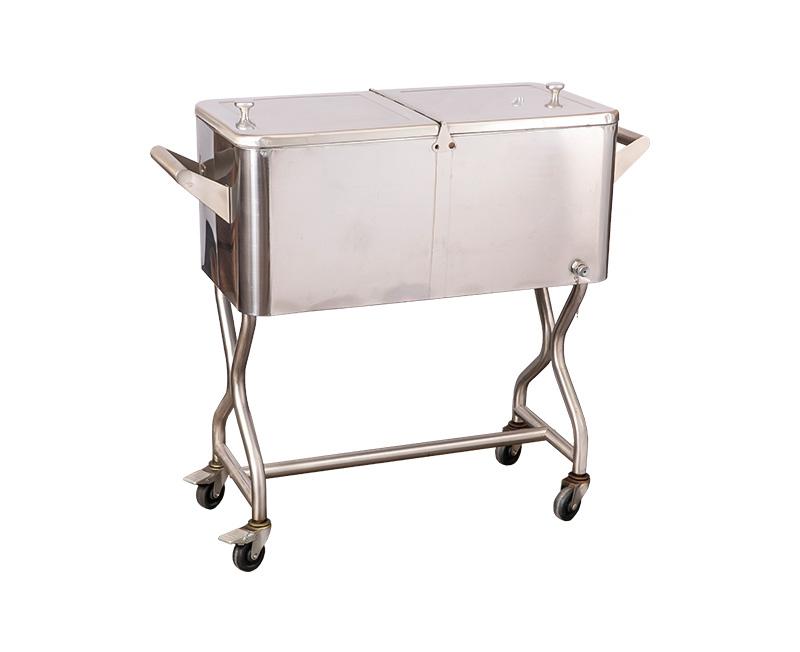The refrigerated and frozen foods are always in the specified low temperature environment during the production, storage, transportation, sales, and pre-consumption stages to ensure food quality and reduce food loss. How to operate in the cooler cart to achieve a multiplier effect? The following aspects should be noted:
1. Appropriate packaging is essential to protect the goods.
Use non-ventilated packaging boxes for frozen goods and ventilated sidewall packaging boxes for fresh goods. The packaging box must be compressive.
As the frozen goods are not allowed to have wind blowing across the surface, because the wind blows through the surface of the frozen goods, the moisture in the goods will be lost and the quality of the goods will decrease. This year, our country's regulations on bulk quick-frozen foods are not allowed to be sold, and this is the reason that packaging must be sold. However, due to its own characteristics, fresh products are still breathing during storage and transportation. If they are not well ventilated, the goods will deteriorate and become damaged. Therefore, it is necessary to ensure that this kind of cargo has good ventilation and ventilation.
2. The goods must be pre-cooled to the required temperature, and the temperature of the goods should be checked when loading; the refrigeration unit is used to maintain the temperature of the goods, not to reduce the temperature of the goods.
Many cooler cart users have a wrong concept. They always think that the refrigerating unit on the cooler cart can freeze or heat the goods loaded in the compartment to the required temperature at will. Therefore, the cargo that is not enough for the transportation temperature requirement is loaded into the carriage, and then the refrigeration unit is set to the required transportation temperature, and the temperature of the cargo is reduced or raised to the required temperature over a certain period of time. However, the opposite is true. Not only does the temperature of the goods fail to drop (or not rise), but the goods are damaged or deteriorated. Because cooler cart's refrigeration unit does not reduce the temperature of the goods, but maintains the temperature of the goods. It is like the quilt we used to sell cold drinks in the past to wrap the goods. When the external cold (heat) source flows into the compartment through radiation, conduction, and convection, it is taken away by the cold air blown by the refrigeration unit, and the heat source is isolated from entering the cargo.
Therefore, when loading goods, the temperature of the loaded goods must be measured first. If the set point temperature of the refrigeration unit is higher or lower than the temperature of the cargo, it is difficult for the temperature of the cargo in the compartment to reach the temperature required for transportation. The storage temperature of the goods must be the same as the transportation temperature. If the temperature of the goods changes frequently, the moisture will be lost, which will cause the quality of the goods to change, which will shorten the shelf life of the goods.
3. Do not stack goods in front of the evaporator outlet, otherwise it will obstruct the cold air flow; blockage above the goods will cause a short circuit in the cold air flow. Keep a minimum distance of 225 mm between the top of the cargo and the roof of the vehicle.
When loading goods, do not pile the goods too high, and make sure that the height of the goods is not higher than the plane height of the air outlet. If the front of the air outlet is blocked by the cargo or is too close to the cargo, it will not only affect the storage and transportation temperature of the cargo, but also affect the normal operation of the refrigeration unit.
Because the air outlet is blocked by the cargo, the cold air (or hot air) cannot circulate in the car normally, which causes the local temperature of the cargo to rise.
If you want to know more about cooler cart, please contact us: outdoor cooler cart.



